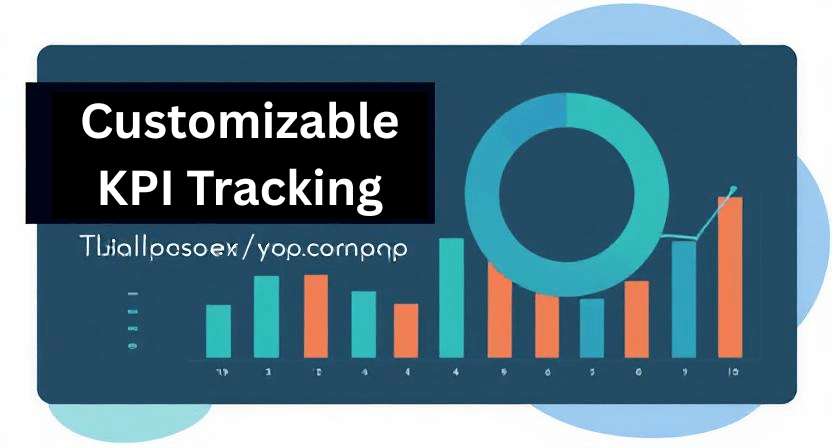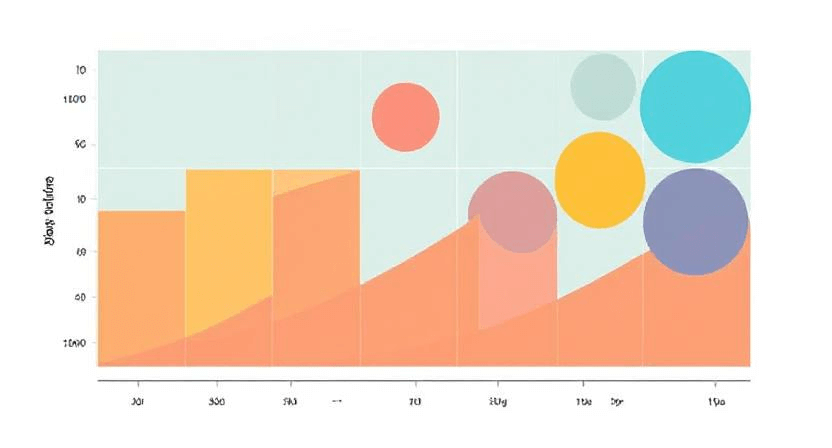Table of Contents
Digital marketing operates in a data-driven world rendering precise Google Ads campaign evaluation essential to achieving better marketing performance. The difficulty occurs in managing the extensive quantity of data. The introduction of a well-structured {google ads report template} provides the solution. The template converts unprocessed data into valuable information which helps you enhance marketing campaigns and achieve business expansion. The following article demonstrates seven impactful methods that will optimize your reporting systems to finally eliminate ambiguity when analyzing Google Ads performance.
Introduction: The Power of Data-Driven Decisions
Google Ads collects abundant data which acts as background noise until you create a clear presentation method in addition to advanced analysis techniques. A properly designed google ads report template transforms random data numbers into meaningful market critical insights. A {google ads report template} enables tracking of important performance metrics to find patterns for better choices that advance your campaign revenue yield. When you report effectively you should present numerical data in a way that creates meaningful stories which showcase advertising results accurately.

1. Customizable KPI Tracking: Tailoring Your Report to Your Goals
Business goals exist in specific and individual forms across all organizations. Your {google ads report template} needs to support tracking of the KPIs which hold the greatest importance to your particular needs.
Key Principles :
Your report should contain conversion metrics which measure conversions together with their conversion rates and both conversion cost and the conversion value.
The Click-Through Rate (CTR) helps you determine the success of your advertising message and audience selection.
CPC monitoring helps you avoid spending more on clicks than necessary and reveals optimization potentials.
Impression Share metrics allow you to determine your present visibility levels so you can plan better reach expansion opportunities.
Return on Ad Spend (ROAS) should be calculated to measure your advertising campaign profitability.
A well-designed report serves to respond to the data-related inquiries that people generate about Google Ads.
Expanded Explanation:
Avoid including all available metrics into your reporting. Your focus should be on KPIs which share a direct relationship with your business targets. Your e-commerce business requires focus on conversion value together with ROAS measurements for success. As a lead generation enterprise the vital metrics should focus on cost per lead together with conversion rate metrics.
You should personalize your report with visual data representations by adding charts and graphs to display your information. Better identification of patterns and trends becomes achievable through this approach.

2. Visual Data Representation: Turning Numbers into Narratives
It is hard to deduce information from raw data. Visual data displays consisting of charts and graphs help users recognize patterns within their data.
Key Principles :
The analysis of CTR and conversion rate fluctuations should use line graphs to display their chronological development.
Bar charts should be used for comparing campaign performance along with assessing the effectiveness of ad groups and specific keywords.
When presenting data distribution the pie chart provides a useful method for visualization and displays the percentages of conversions that stem from different devices.
Heatmaps represent user activities on your landing pages via visual display methods.
Reports require correct implementation of {google ads logo size} and {google ads landscape image size} parameters for adding images properly.
Expanded Explanation:
Cartographic representations enable users to detect abnormal patterns or deviations which appear in their data collection. The incorporation of visualizations enhances both the readability and comprehension abilities of stakeholders who understand minimal Google Ads data.
You should apply simple and direct labeling systems for your visualizations. The presentation of your information will become clearer to viewers.

3. System-generated reports reduce work time and deliver standardized results.
The process of writing reports manually takes substantial time while producing errors in data content. The automation of your reporting will lead to better time management while providing consistent results in your work.
Key Principles :
The system allows you to establish report generation schedules that create automated documents which will reach your inbox and any relevant stakeholders.
The integration of Data Connectors allows your reporting platform to retrieve Google Ads data automatically.
The ability to generate custom dashboards enables users to monitor their campaign performance in real time.
Home workers who use Google Ads will benefit significantly from automated reports.
Expanded Explanation:
Your time becomes available for strategic analysis when you automate your work since manual tasks get eliminated.
Insist on accurate and current information in all your automated report outputs. Your reports need regular reviews to confirm their delivery of useful information.

4. Segmentation and Filtering: Uncovering Hidden Insights
Data segmentation with filtering reveals secret information that helps you locate spaces for development within your metrics.
Key Principles :
Your data analysis must use device segmentation that splits information into three areas (desktop, mobile and tablet) to investigate performance differences.
Your business performance analysis should be segmented by location to examine how geographic areas conduct business.
Audience Segmentation analyzes your information based on audience categories to find out how various audience groups perform.
Time Segmentation requires breaking your information into day, week or month periods to discover recurring patterns and trends.
People who have Google Ads questions can find their solutions through data segmentation.
Expanded Explanation:
Data segmentation enables you to locate particular problem areas within your information. You discover that mobile marketing shows poor return on investment whereas one specific demographic targets convert more effectively.
The filtering process lets you zero in on necessary data points while cutting out unrelated information.

5. Competitor Analysis: Benchmarking Your Performance
A competitive performance benchmarking strategy generates important understanding and helps you pinpoint areas for betterment.
Key Principles :
The Auction Insights report enables you to monitor your impression share together with the overlap rate and position above rate in relation to your competitors’ performance.
Be Aware of Your Competitors’ Keywords Through Analysis to Discover Fresh Opportunities and Learn About Their Keyword Targeting Approach.
Study competitor advertising copy to learn their messaging approach and determine ways to stand out through different messaging.
Researching the size logos and landscape images of competitors may generate potential value.
Expanded Explanation:
Knowing your market position through competitor analysis enables you to find opportunities which will help enhance your campaign strategies.
Don’t just copy your competitors. Use competitive strategies as motivational tools to generate your distinct marketing methods.

6. Actionable Recommendations: Turning Insights into Action
The {google ads report template} needs to offer actionable recommendations for improving performance next to presenting data.
Key Principles :
Your data analysis should let you pinpoint several targets to optimize in your current marketing campaigns.
The report contains precise guidance showing how to handle noted areas for improvement.
Your recommendations must follow a two-step approach that starts with ranking them according to their significance as well as practical applicability.
The value of written recommendations depends on their ability to offer specific solutions to Google Ads-related questions.
Expanded Explanation :
The value of your report increases when you include implementable suggestions because they facilitate the transformation of your findings into actual operational steps.
The suggestions you provide should be direct, brief and easy to understand for all readers. Use details sorted with evidence to confirm your proposed solutions.
Test new ad headlines which focus on your unique selling propositions to raise your CTR by 15% according to your plan.
Implement your suggestions according to their potential benefits and implementation ease. Choose recommendations which result in substantial campaign performance improvements while being attainable to implement.
Develop a schedule for execution of your recommendations while specifying which team members will handle each job. The implementation of your recommended strategies will become a reality through proper team member assignment.
Find time to monitor your suggested actions while monitoring their achievement. The tracking system lets you identify which strategies succeed and which strategies fail to perform.

7. Regular Review and Iteration: Continuous Improvement
Your Google Ads report template exists as a dynamic document system rather than a fixed one. The template needs periodic examination combined with modifications until it stays relevant and produces meaningful information for your business needs.
Key Principles :
Set up routine assessment periods to verify your template remains active and brings valuable contributions for your business demands.
You should collect input from people impacted by your system to learn what they require together with areas where improvements should happen.
The report template should receive metric and visualization updates whenever necessary.
Your report template must adjust according to changes made to campaign objectives as well as modifications in Google Ads platform elements and industry developments.
Since numerous users conduct Google Ads work at home it becomes essential to maintain both easy accessibility and continuous updates for their reports.
Expanded Explanation:
Continuous changes characterize the digital marketing environment today. Multiple new technologies together with updating algorithms and evolving customer behaviors appear periodically. If your report template follows standard procedures you can easily accommodate those changes which occur in your Google Ads system.
Periodic assessment helps to maintain relevant and efficient reporting systems. The process enables you to uncover data and insight deficiencies that need improvement measures.
Feedback from stakeholders is essential. The feedback allows you to verify whether the report fulfills stakeholder needs while also revealing potential areas for improvement.
Feel free to test various performance indicators and presentation styles together with report generation schemes. Your search to discover the perfect method of data and insight presentation will become successful.
Modifying your Google Ads reporting practices continuously leads to reaching the maximum possible value.
Conclusion: Empowering Your Google Ads Success with Effective Reporting
The strategic power of properly designed {google ads report template} enables decisive decisions that lead businesses toward increased growth. Using the seven powerful hacks presented in this paper enables you to revamp your reporting system for Google Ads campaigns to achieve superior results.
Reporting effectiveness stems from more than number presentation because it involves storytelling which exposes your advertising results accurately. Your ability to enhance performance analysis and strategy optimization depends on how well you customize reports to match your goals while visualizing data and automating standard reports and using data segmentation tools to analyze competitors alongside providing recommendations for actions based on your reports which you need to review and update constantly.
Data-based decisions hold the key to successful digital marketing performance in the competitive modern business environment. Having a strong Google Ads report template will give you necessary insights to maintain competitive advantage while reaching your marketing objectives.
Frequently Asked Questions
What is a Google Ads report template and why is it important?
A Google Ads report template is a pre-designed format that helps you organize and analyze your ad campaign data efficiently. Instead of manually compiling reports every time, a template saves time and ensures consistency. It’s crucial because it allows marketers to track performance, spot trends, and make data-driven decisions easily.
How can I create a Google Ads report template?
Creating a Google Ads report template is easier than you think! You can use Google Data Studio, Excel, or even Google Sheets. Start by identifying the key metrics you need (like clicks, impressions, and conversions), then set up charts or tables to visualize the data. Save the format so you can reuse it for future reports.
What key metrics should be included in a Google Ads report template?
The key metrics depend on your goals, but generally, you should include impressions, clicks, CTR (Click-Through Rate), CPC (Cost Per Click), conversions, conversion rate, ROAS (Return on Ad Spend), and quality score. These metrics help measure performance and optimize campaigns for better results.
Are there free Google Ads report templates available online?
Yes! Many free Google Ads report templates are available online. Google Data Studio offers some built-in templates, and various marketing blogs and agencies provide downloadable templates for Google Sheets or Excel. Just make sure the template you choose aligns with your reporting needs.
How does a Google Ads report template help in campaign analysis?
It makes campaign analysis much easier! Instead of digging through raw data, a well-structured report template presents key insights visually. You can quickly see what’s working, where you’re losing money, and what needs improvement—all in one place. This saves time and improves decision-making.
Can I customize a Google Ads report template for different clients?
Absolutely! Customizing a report template for different clients is a great way to highlight the most relevant data for each business. You can adjust branding, choose different metrics based on industry, and include insights tailored to each client’s goals. This adds a personal touch and makes your reports more valuable.
What are the best tools to design a Google Ads report template?
Some of the best tools for designing a Google Ads report template include Google Data Studio (for interactive reports), Google Sheets or Excel (for spreadsheet-based reports), and reporting tools like Supermetrics or AgencyAnalytics for automated dashboards. The right tool depends on your reporting needs and client preferences.








